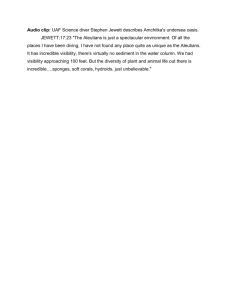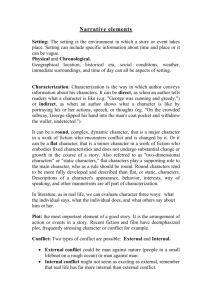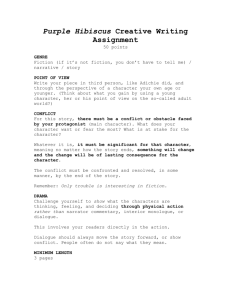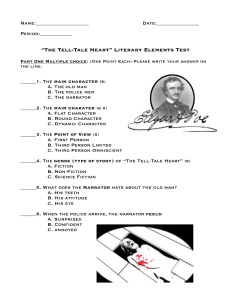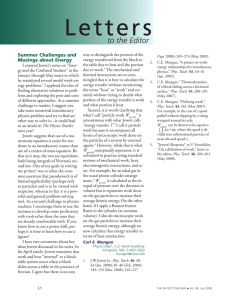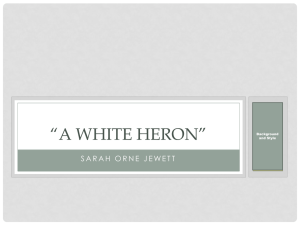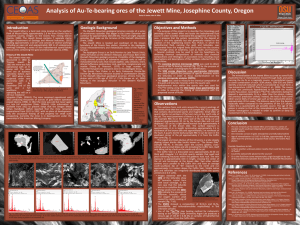Sarah Orne Jewett, “A White Heron” Applicable fiction terms: (look
advertisement
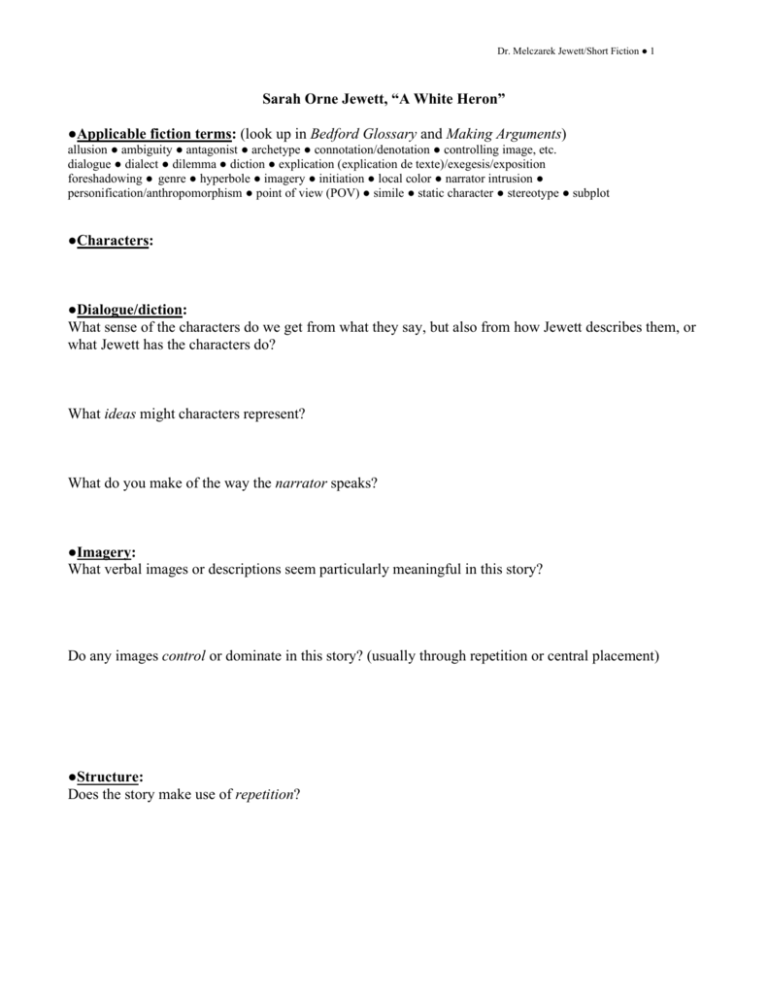
Dr. Melczarek Jewett/Short Fiction ● 1 Sarah Orne Jewett, “A White Heron” ●Applicable fiction terms: (look up in Bedford Glossary and Making Arguments) allusion ● ambiguity ● antagonist ● archetype ● connotation/denotation ● controlling image, etc. dialogue ● dialect ● dilemma ● diction ● explication (explication de texte)/exegesis/exposition foreshadowing ● genre ● hyperbole ● imagery ● initiation ● local color ● narrator intrusion ● personification/anthropomorphism ● point of view (POV) ● simile ● static character ● stereotype ● subplot ●Characters: ●Dialogue/diction: What sense of the characters do we get from what they say, but also from how Jewett describes them, or what Jewett has the characters do? What ideas might characters represent? What do you make of the way the narrator speaks? ●Imagery: What verbal images or descriptions seem particularly meaningful in this story? Do any images control or dominate in this story? (usually through repetition or central placement) ●Structure: Does the story make use of repetition? Dr. Melczarek Jewett/Short Fiction ● 2 Does it rely on elements of metaphor, or of foreshadowing? ●Symbols/references/etc.: What elements work as symbols in the story? What elements work as metaphors–of thinking about something by speaking about something different? What about elements of simile or comparison? ●Style: From what/whose point of view (POV) is the story told? How does the narrator tell this story? Through what kind of language? What do you make of the narrator intrusions, places where the narrator stops telling the story and either talks to the characters or to us the readers directly? Does the story suggest any course of action to the reader? ●Themes (what the story is about, not just what happens in it [plot]): The critical articles on the story in the Casebook give some ideas.

